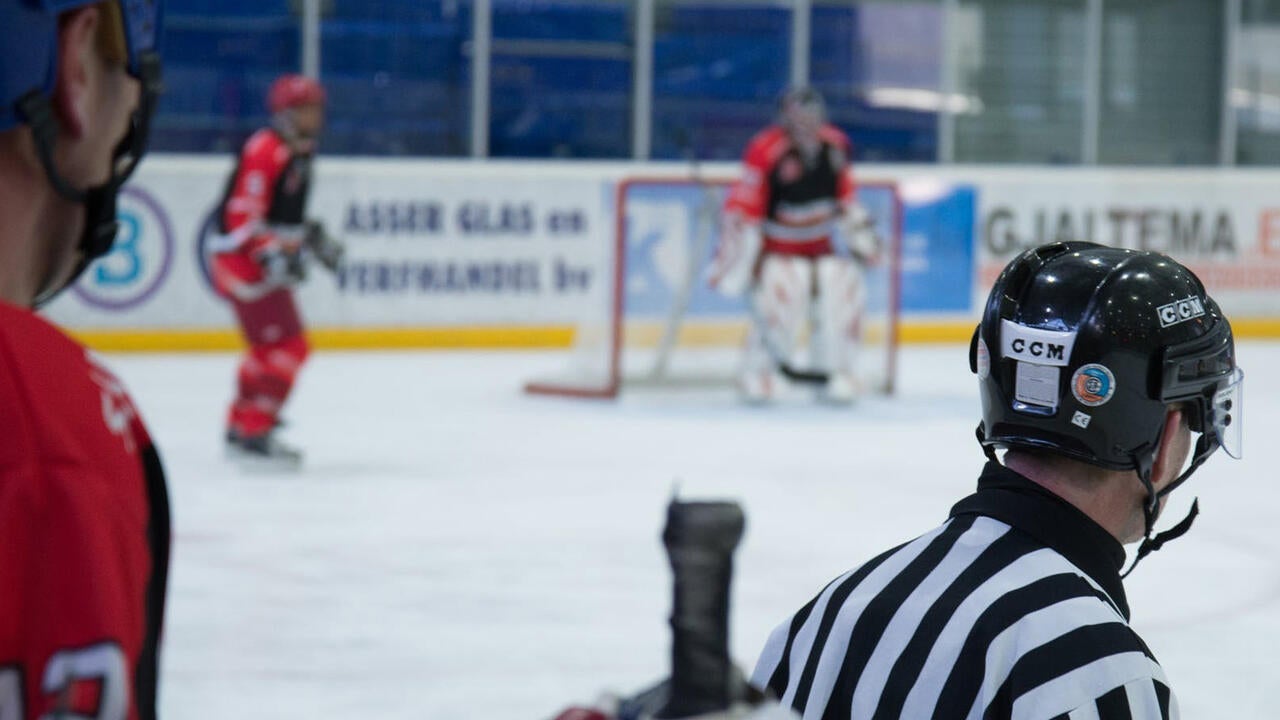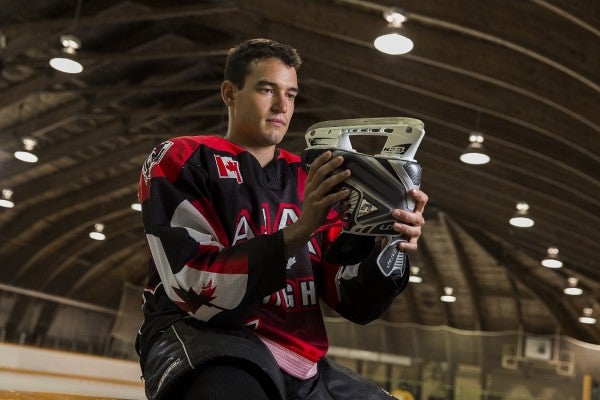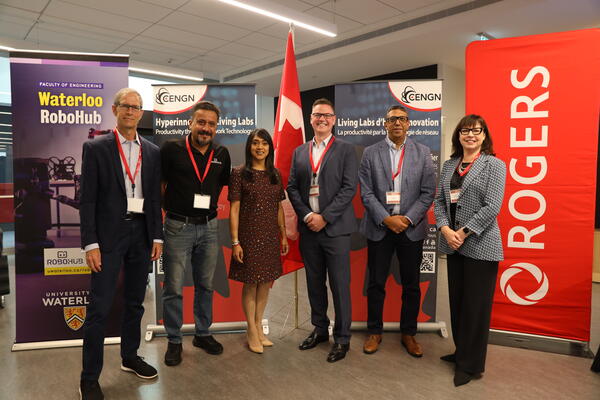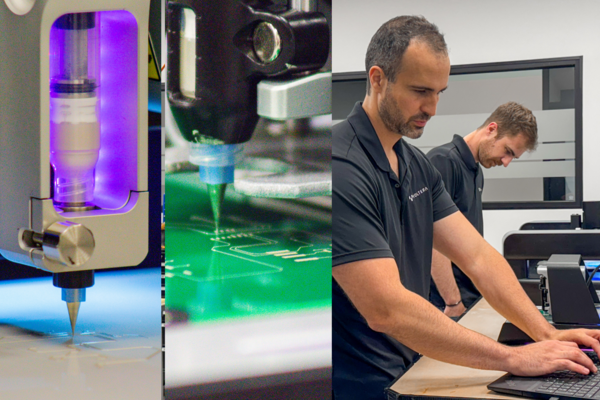
The startup that gives skates an extra edge
Spring-loaded skate gives hockey players more power with each stride

Spring-loaded skate gives hockey players more power with each stride
By Julie Stauffer Faculty of EngineeringJeffrey Azzolin has been hitting the ice almost as long as he’s been hitting the books.
The mechanical engineering grad (BASc ’13) first laced up as a minor hockey player in grade school. He spent his elementary and high school years playing rep hockey in Ajax, Ontario. At Waterloo, he was part of an intramural team.
So when it came to choosing a final-year Capstone Design project, Azzolin didn’t need to look farther than the pair of skates propped up beside his door. While hockey boots have changed significantly since he first wobbled onto the ice two decades ago, the rest of the skate hasn’t. And that got him thinking.
 Knowing from experience how hard hockey can be on knee joints, Azzolin set out to cushion that impact. He put together a blade holder that sandwiches a coil spring between the boot and the blade. When the blade hits the ice, the spring absorbs the impact, reducing pressure on joints. When pushing forward, the spring releases that energy, providing extra power with each stride.
Knowing from experience how hard hockey can be on knee joints, Azzolin set out to cushion that impact. He put together a blade holder that sandwiches a coil spring between the boot and the blade. When the blade hits the ice, the spring absorbs the impact, reducing pressure on joints. When pushing forward, the spring releases that energy, providing extra power with each stride.
The design earned Azzolin a $60,000 Ontario Scientists and Engineers in Business Commercialization Fellowship from FedDev Ontario. As well as cash, the fellowship included the mentorship of John McPhee, a Waterloo systems design engineering professor.
“It was a dream come true,” says Azzolin. With help from McPhee, he launched Bladetech Hockey and set out to create a marketable product. And that’s when things became a little more challenging.
The concept was great, but perfecting the design while keeping production costs down took iteration after iteration. After more than a year of work, Azzolin ended up discarding the coil spring and replacing it with a cantilever spring incorporated right into the blade itself. Much lighter and easier to install, the new cantilever design stores energy and then propels the player forward providing a significant speed boost.
According to Azzolin, choosing Waterloo Engineering was the best decision he ever made. As well as a slew of technical skills, the program gave him hands-on project experience and plenty of soft skills that translate to the business world. After completing his degree, he benefited from the many incubators throughout the Waterloo Region, including Communitech, the Accelerator Centre and the University’s Velocity program.
Azzolin will be the first to tell you that commercializing innovation isn’t easy. “It takes a long time, it’s more difficult than you think. You lose a lot of battles,” he says. But like any good player, this entrepreneur has his game face fixed firmly in place.
The prototypes have won praise from a gamut of hockey players, from the Waterloo Warriors, the OHL, all the way to the NHL. According to Montreal Canadien’s Greg Stewart, the skates provide explosive power coming out of the corners. “It gives you that crucial extra step over the competition,” he says in a testimonial on the Bladetech website.
If all goes well, Azzolin’s blades will hit the market in 2015. Ultimately, he’s aiming to see his blades on the skates of every player in the NHL. And if he succeeds, Canada’s favourite game could get even faster and more exhilarating than ever.
“It’s going to be an exciting year,” he predicts.

Read more
Living Lab initiative will help Canadian companies test and validate products and services at Waterloo’s RoboHub

Read more
Voltera prints electronics making prototyping faster and more affordable — accelerating research to market-ready solutions

Read more
New funding accelerates the deployment of Cobionix’s medical robotics platform across North America and the UK
Read
Engineering stories
Visit
Waterloo Engineering home
Contact
Waterloo Engineering
The University of Waterloo acknowledges that much of our work takes place on the traditional territory of the Neutral, Anishinaabeg, and Haudenosaunee peoples. Our main campus is situated on the Haldimand Tract, the land granted to the Six Nations that includes six miles on each side of the Grand River. Our active work toward reconciliation takes place across our campuses through research, learning, teaching, and community building, and is co-ordinated within the Office of Indigenous Relations.